|
|
Monday Comment: BlueTooth Woes; CSAM MIA; Pixelmator Photo for iPhonesBy Graham K. Rogers
I had used it too with the Mac, but not after Monterey arrived. The 12.1 update did nothing to change that, so I contacted the service department and had a non-answer within a day. The Mac is not really supported; handheld devices are. The problem is with the variability of hardware and drivers in the Bluetooth ecosystem. With phones and tablets, they use the same sorts of overall designs so it is easier to manage the devices. That said, the email from the service department did suggest a number of Bluetooth USB dongles, but that sort of defeats the object for me, particularly as two of those use USB-A connectors, so need an additional connector. The Creative BT-W3 does use USB-C. As I rarely use the Mac with the speaker anyway, and still have the Beoplay H7 headphones, my AirPods and the speakers of the MacBook Pro, I will make do.
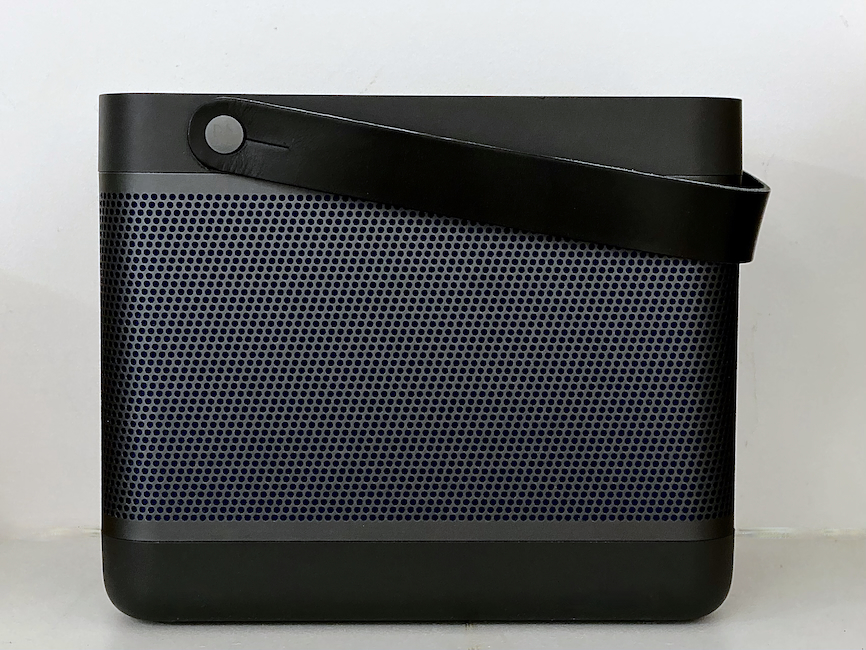
Bang & Olufsen Beolit 20
Announcing on-device image detection at the same time as the safety features for Messages, was not the best move as they were all lumped in together and the expert input on the way hash detection could be made to work for ideas other than child pornography suggested Apple could become the very opposite of what it claims in terms of privacy. The brakes were put on: further examination needed. Now the idea has gone from Apple's site. For now.
I have a number of photo editing applications on each of my devices and, as much as I like Pixelmator Photo on the iPad, I needed some convincing before downloading this. A couple of days later a 2.0.1 version of the iPhone app was released as some minor problems were revealed by wider use. I was pleased to see a First Impressions review of the iPhone version on MacStories by John Voorhees. The articles on this site are often a little longer than the normal hit and run items one finds on the internet, and they are intelligently written. The opening paragraph echoes my views and ends with a positive overview of the app (Strike One). Voorhees writes that the design has been appropriately adjusted for the different interface and that it "tilts in favor of quick access and edits, which I think is appropriate on a device like the iPhone" (Strike Two).
Three screenshots from Pixelmator Photo on iPhone, with Selective Color controls on Darkroom (right)
In his conclusion Voorhees note that this is an "uncompromised version of the app that greatly increases its utility simply by being available more often" (Strike Three). I downloaded the app, which is shown as 149 baht here, but a panel appeared telling me that, as I already had a version of this (on the iPad) this download was free. I am impressed. I had fully expected (and was willing) to pay for this, but the developers (Lithuanian brothers Saulius and Aidas Dailide - Christian Zibreg) have not taken that route. Several other comments (iMore, MacRumors) appeared to use handout information and images, with PetaPixel noting (as I had in the past when using it on the iPad) that the developers refers to it as "Aperture for the iPhone". This item also comments that the app has support for over 600 RAW formats. The app is really easy to use and I edited some recent scans, particularly enjoying the Crop tools, that include straighten, perspective, flip (horizontal and vertical) and rotate. The editing tools have the same selection as the iPad version although with the interface they are not all visible and I had to scroll down to open, then use those I wanted. That Selective Color panel, similar to the one in Aperture, has more color options than Photos on the Mac. This is missing in Photos on the iPhone and iPad with its weak interface, although other apps, like Darkroom (also on the Mac) does have such tools. Pixelmator Pro on the Mac has a much wider range of tools, similar to Affinity Photo, a substitute for Photoshop. Perhaps Pixelmator could bring the Photo app to the Mac too, although to be a real replacement for Aperture, it would need excellent metadata handling, plus other tools (remember the Light Table and Image Stacking?).
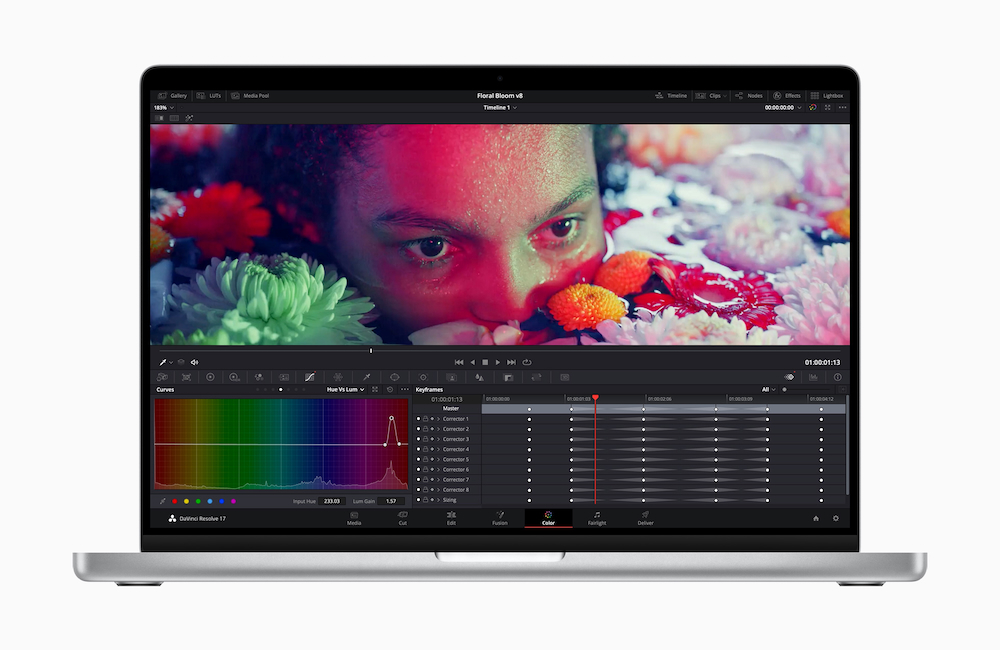
MacBook Pro with M1 Max processor - Image courtesy of Apple
Before explaining the benchmarks, the article explains ProRes in some detail. It can also be used on the iPhone 13 Pro, but as it is an uncompressed format, it uses storage space and Apple does provide a warning about this when a user turns the feature on.
I think it is a waste of time using the AirTag with my camera as that is a target device for thieves and the AirTag is unlikely to be a deterrent. I have concealed one within a case so if that goes missing, I could track that; and I have a spare for if I ever go on a plane again, so I can see when the case arrives at the luggage carousel. A woman in Texas was recently annoyed by the theft of Christmas decorations in the neighborhood. I agree, it is mean; Grinch-like, and Oliver Haslam (iMore) uses the term in an article about the recovery of stolen decorations by Nyssa Galvan. The AirTag tracked the stolen property to a local address, but the police were unable to recover them as the residents did not open the door of the house. There was a sequel and some form of justice was served although that is not stated.
After the weekend, another, brief series of emails asked me about the SSD size that would work and suitable brands. Each of these questions were answered by me looking at Google. With a short list of disks available, I was asked to help him decide on the brand. I recognized three in the list, although one was only available online. When the disk is installed by the repair shop, I expect there will be more questions about installing from a Time Machine backup, which we went through a few months ago when the installation failed before. With a modern SSD in an older Mac, there may be additional problems (firmware, caches). Sometimes, trying to run with outdated technology is not a good investment.

Graham K. Rogers teaches at the Faculty of Engineering, Mahidol University in Thailand. He wrote in the Bangkok Post, Database supplement on IT subjects. For the last seven years of Database he wrote a column on Apple and Macs. After 3 years writing a column in the Life supplement, he is now no longer associated with the Bangkok Post. He can be followed on Twitter (@extensions_th) |
|


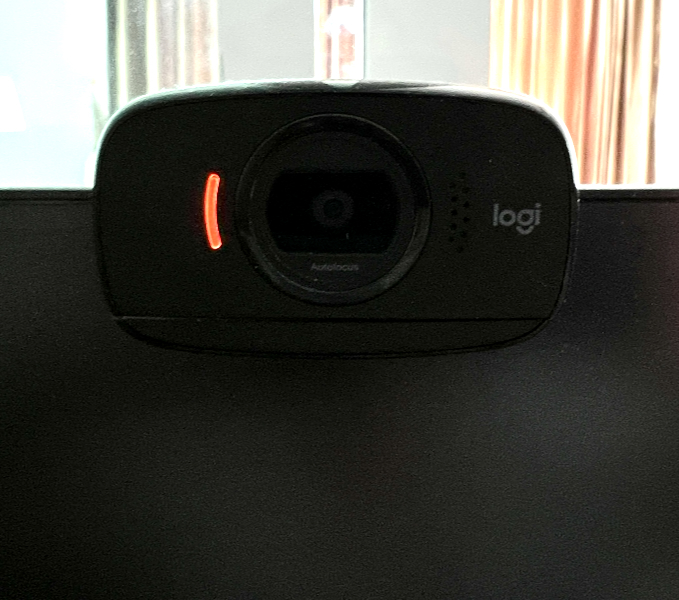 With the update to Monterey 12.1 I finally had the use of my webcam again, at least for Webex, so I will be able to use that when online teaching begins next semester. It is intermittent with FaceTime, however. It works after a restart, but if I experiment with the hub or ports, the camera fails to connect. The other problem concerned my B&O Beolit 20 speaker that I use with my AppleTV, the iPhone and my iPads.
With the update to Monterey 12.1 I finally had the use of my webcam again, at least for Webex, so I will be able to use that when online teaching begins next semester. It is intermittent with FaceTime, however. It works after a restart, but if I experiment with the hub or ports, the camera fails to connect. The other problem concerned my B&O Beolit 20 speaker that I use with my AppleTV, the iPhone and my iPads.
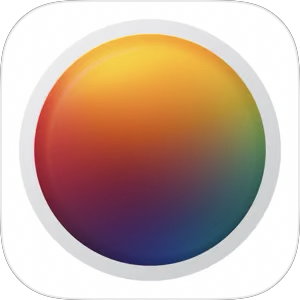 Pixelmator Photo (2.0) was released this week, with a number of useful additional features, including redesigned Photos library access and denotes tools. Along with this update, Pixelmator also released a version for the iPhone. The original Pixelmator runs on the iPhone, but Affinity Photo does not: the idea being that the iPad was the better interface for this, and for Pixelmator Photo. I expect that over the last couple of years, some users have asked for an iPhone version and Pixelmator have now obliged.
Pixelmator Photo (2.0) was released this week, with a number of useful additional features, including redesigned Photos library access and denotes tools. Along with this update, Pixelmator also released a version for the iPhone. The original Pixelmator runs on the iPhone, but Affinity Photo does not: the idea being that the iPad was the better interface for this, and for Pixelmator Photo. I expect that over the last couple of years, some users have asked for an iPhone version and Pixelmator have now obliged.




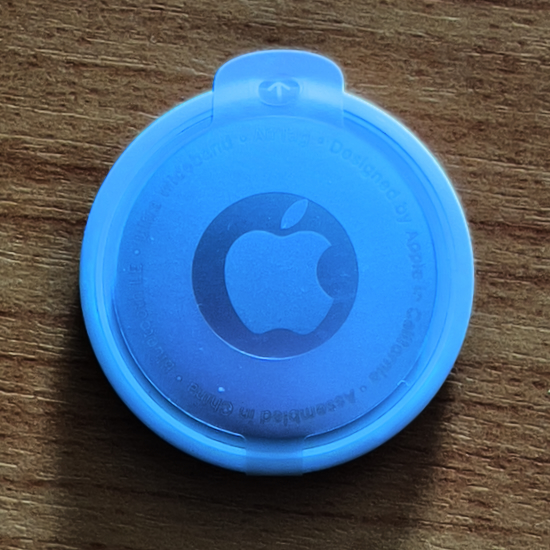 I wrote a couple of comments recently
I wrote a couple of comments recently 